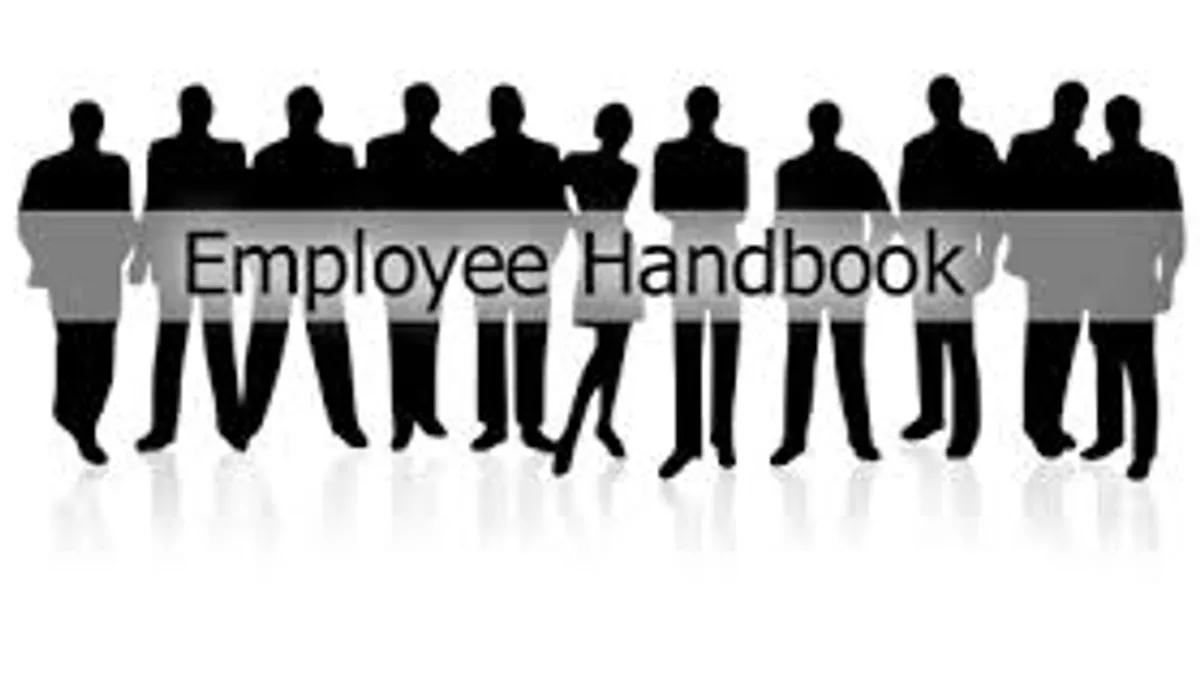Dive Brief:
- It's definitely time to rethink the employee handbook concept, according to an article at Forbes. Handbooks need to be easy to read, cover important topics and give useful advice.
- For one thing, most employees never really read their handbooks, which typically is an overwhelming document written in some sort of unintelligible legalese, Forbes notes. As a result, a signature page that says an employees has read it (typically signed at orientation) will hold little weight in a courtroom.
- If an employee does file a lawsuit, the article notes that employers will have little success proving that the employee had a fair chance to read the handbook, so the defense that it was "all in the handbook" probably won't fly in the courtroom anyway.
Dive Insight:
The negative, even hostile tone used by most employee handbooks sends the wrong message, according to the article, and often can even insult new employees. Suggestions range from having the CEO address employees early on and then using an actual employee's (a receptionist is mentioned, for example) writing in the book to cover various aspects (dress code, diversity, technology use, etc.) of the employer's rules and regulations in a positive, informative tone. Of course, HR would guide the content creation, working with others across the organization.
Most of all, the article says, an employee handbook needs must drop the accusatory tone marking most existing handbooks today, and be a relatively brief guide to what it means to work at the organization. The article offers that the handbook should serve as a "workplace equivalent of the book you find on the desk in a hotel room" – simple, relatively brief and providing the information employees really need.











